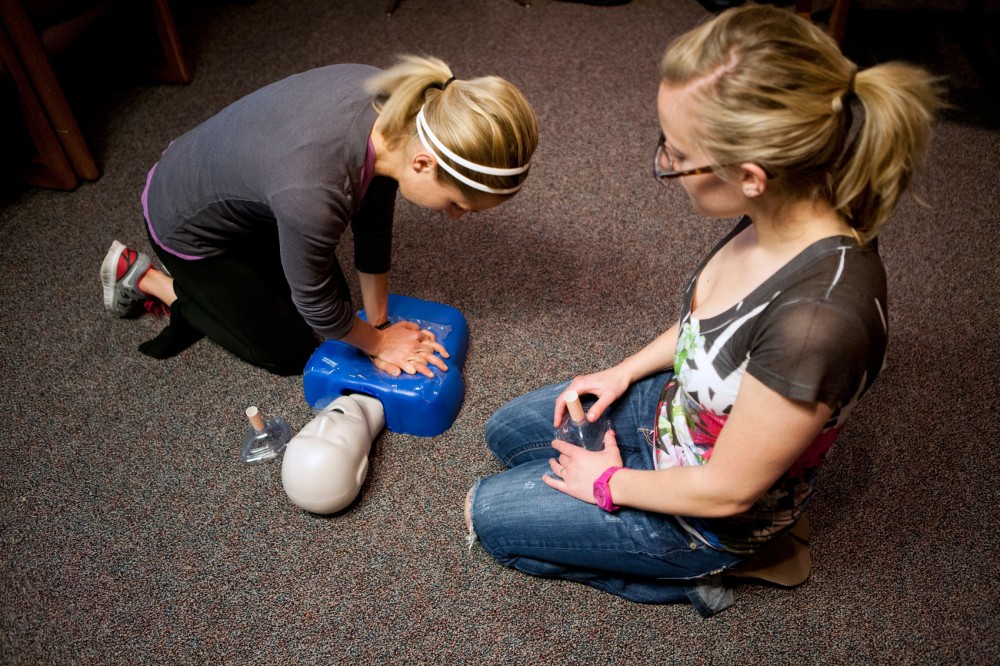Minnesota high schools will be required to provide CPR training, starting in 2014.
The law, signed by Gov. Mark Dayton on April 23, would require all school districts to provide training of cardiopulmonary resuscitation and automated external defibrillator instruction as part of the curriculum in grades 7-12. Students will receive hands-on training at least once before they graduate.
The previous version of the law only encouraged schools to provide training. Students won’t be required to be CPR-certified under the bill, however.
Justin Bell, government relations director for the American Heart Association in Minnesota, said the organization had been one of the largest supporters of the bill.
“We think it’s a fantastic bill,” he said.
Nearly 383,000 out-of-hospital cardiac arrests occur annually in the U.S., according to the American Heart Association. The organization trains nearly 12 million people in CPR a year.
Nick Greco, a team manager and paramedic in the University of Minnesota’s Department of Emergency Management, said CPR and AED training are vital skills.
“I think it’s important to help people survive,” Greco said. “Therefore, it’s important for people to know how to perform CPR.”
If CPR and defibrillation are performed on a cardiac arrest victim within eight minutes of collapse, they stand a 20 percent chance of survival. Chances of survival reduce by 7 to 10 percent after every minute following the collapse. Brain damage and death can occur four to six minutes after the attack, according to the American Heart Association’s Chain of Survival statistics.
“Survival rates for cardiac arrests are terrifyingly low,” Bell said. “There’s only so much time before brain damage and other injuries can occur.”
Both Emergency Medical Services and Boynton Health Service offer frequent CPR training classes for the public, as well as recertification for first responders and individuals in the medical field.
Dave Golden, director of public health and marketing for Boynton, said he hasn’t really looked into the new law, but said on the surface, the bill is “a very good thing.”
Golden said besides health professional and faculty certifications, University students can take classes at Boynton for a reduced rate.
Greco said 911 centers can coach and teach a caller how to perform CPR, but resuscitation can occur faster and increase survival chances with someone who has been trained and educated.
Greco said there are 250 defibrillators in hallways and other public spaces around the University campus.
The bill outlines that school districts may use community members like paramedics, police officers and firefighters to provide instruction. If a school district requests resources for training, the Minnesota Resuscitation Consortium must provide them to the district, according to the bill.
Greco said even some experience in CPR and AED training could potentially help a victim in medical distress.
“If a person needs CPR and they’re not breathing and have no pulse, something is better than nothing,” Greco said. “Without any attempt to resuscitate the person, the chance of survival is zero.”
Greco, who has 23 years of experience as a paramedic, said he’s seen higher survival rates in the past few years, and he attributed it to more CPR and AED training and education.
Bell said the more people with training and knowledge of the CPR procedures, the higher the survival rates for victims.
“If we can teach more people how to perform CPR,” he said, “we can buy more precious minutes.”








